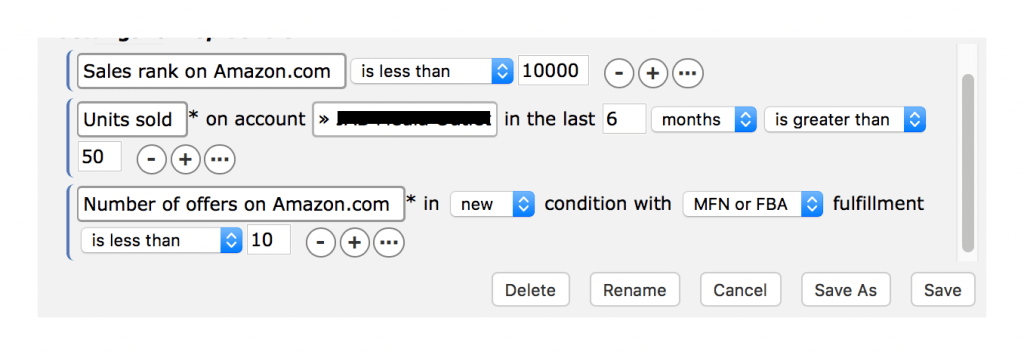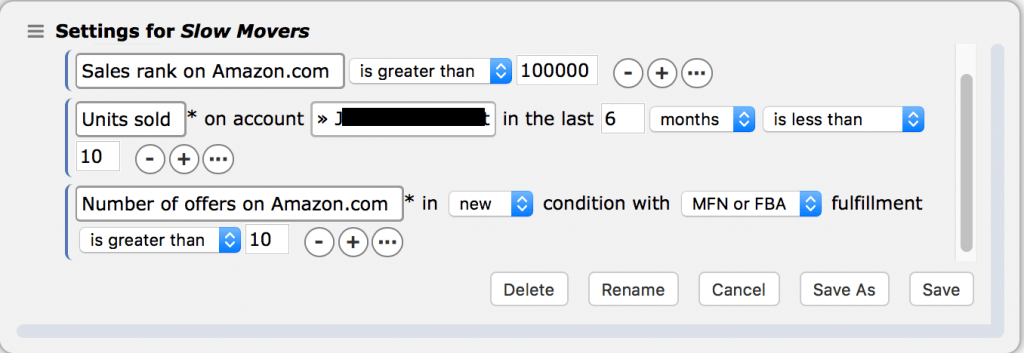
With 2017 drawing to a close and the holiday sales season in full swing, it’s sometimes easy to overlook planning for the next year. But, as many of us know, easy isn’t always smart. The key to a successful year is starting to plan before the year even begins. With that in mind, if you haven’t started evaluating 2017 in order to make smarter sourcing and business decisions in 2018, you’re already a bit behind. But worry not! It’s never too late to get on track. And Sellery is here to help.
When looking to plan for the coming year- the future of your business-the best place to look is in the past. Amazon sellers should evaluate their past years, the successes and failures, lessons learned, etc. and use that information to make informed decisions about business process changes and about what to sell and how to sell it. And, because time is of the essence, using an automated tool to help you evaluate your inventory will help you save time. Enter, Sellery, our web based automated repricingIt’s the practice of controlling and c... More and inventory management tool.
Not only can Sellery help you maximize your sales and profits, year round, it can also help you gain valuable insights into your inventory and sales trends so that you can quickly identify your top movers and money makers. And, conversely, items that maybe aren’t selling quite as well as you’d initially hoped they would. Why is this important, you ask? Because knowing what items in your inventory sell well and at what profit margins will help you decide what to continue stocking and what to remove from your inventory in 2018. We all hope to have inventory that moves quickly and sells for good profits. So finding those gems in your inventory quickly and easily gives you an edge.
So how can I use Sellery to find my top sellers and slow movers?
Two words. Smart lists. Use this awesome Sellery feature to dynamically segment your inventory based on criteria that’s important to you. Such as sales velocity, number of competitors, and sales rankThe sales rank of products on Amazon ind... More to name a few.
For example, you can build a smart list that contains all of the items in your inventory that meet the following criteria:
- Sales rank is less than 10k
- Units sold in the last 6 months is greater than 50
- Number of competitors is less than 10
 The specific numbers you use here should depend on your business, inventory, and thresholds, but once these items are segmented by Sellery, you have an at-a-glance view of the items in your inventory with a lot of selling and profit potential.
The specific numbers you use here should depend on your business, inventory, and thresholds, but once these items are segmented by Sellery, you have an at-a-glance view of the items in your inventory with a lot of selling and profit potential.
Want to find those slow movers so you can eliminate them from your inventory before 2018? Try something close to the inverse of the top sellers list:
- Sales rank is higher than 100k
- Units sold in the last 6 months is less than 10
- Number of competitors is greater than 10

I identified my top performers and slow movers. Now what?
Now you make some smarter business decisions about what you sell in 2018 and how you sell it (via FBA or Merchant Fulfillment). Ditch the slow movers and non money makers you were able to identify. Either create a removal or disposal order if they are at Amazon FBA or discount them heavily in hopes to get them out the door and out of you inventory. Even if you lose a bit of money getting them off your hands, it will be worth it in the long run. And then make sure you don’t restock those items or ones like them next year.
Look at your top sellers and stock more of those items and ones similar. Assuming, of course, you’ve verified those items will still be viable and likely popular in the coming year. Keep an eye out for good deals on those items now, in the holiday sales season, so that you can stock up and sell them for higher profits later in 2018.
How can I find new top performing inventory to source?
Once you’ve identified the top sellers in your current inventory, look for trends and similarities or patterns of characteristics those items have in common. Then use that data to extrapolate on what sorts of like-items might also have high selling potential. It’s generally a good idea to have a tool like Profit Bandit at your disposal so that you can collect real time data about items you are considering sourcing. Look at their current sales rank, sales and pricing history, who is selling it, and how it is being sold (FBA/MFN) to determine it’s viability in your own Amazon inventory. Profit Bandit will also provide your estimated profit for both FBA and Merchant Fulfillment. Only source things with the potential to sell at or above your desired profit threshold. This should help you shrink your ‘slow movers’ list for 2018. And in turn, hopefully, boost your top sellers and profits.
You should also scour online forums, direct source websites, and attend trade shows as much as possible. Many people have succeeded as Amazon sellers but to truly become top tier, you’ve got to find and stock the unicorns. As an Amazon seller, you should also be a unicorn hunter. With your eyes always watching, bow at the ready.
How can I try Sellery and become a master unicorn hunter?
This is the easy part! You can sign up here for our free two week trial, complete with support and implementation. Our Sellery experts are on hand almost 24/7 to address questions and to help you navigate not only Sellery but also the complex and ever changing landscape of Amazon.
Want an extra free week of trial time to find your inventory unicorns?! Just sign up at the above link and email us at Sellery@SellerEngine.com with the blog code word ‘unicorn’ and we’ll extend the trial to a total of 3 free weeks. Some might call that a steal.
Are you a master unicorn hunter? Drop your favorite sourcing tips in the comments below. We’ll pick one entry at random and send the winner a pretty sweet gift card.

Kate is an avid reader/writer, world traveler, dog lover, lead singer in a band, and Amazon extraordinaire. She loves long walks in pretty much any setting and helping Amazon sellers grow and succeed.





